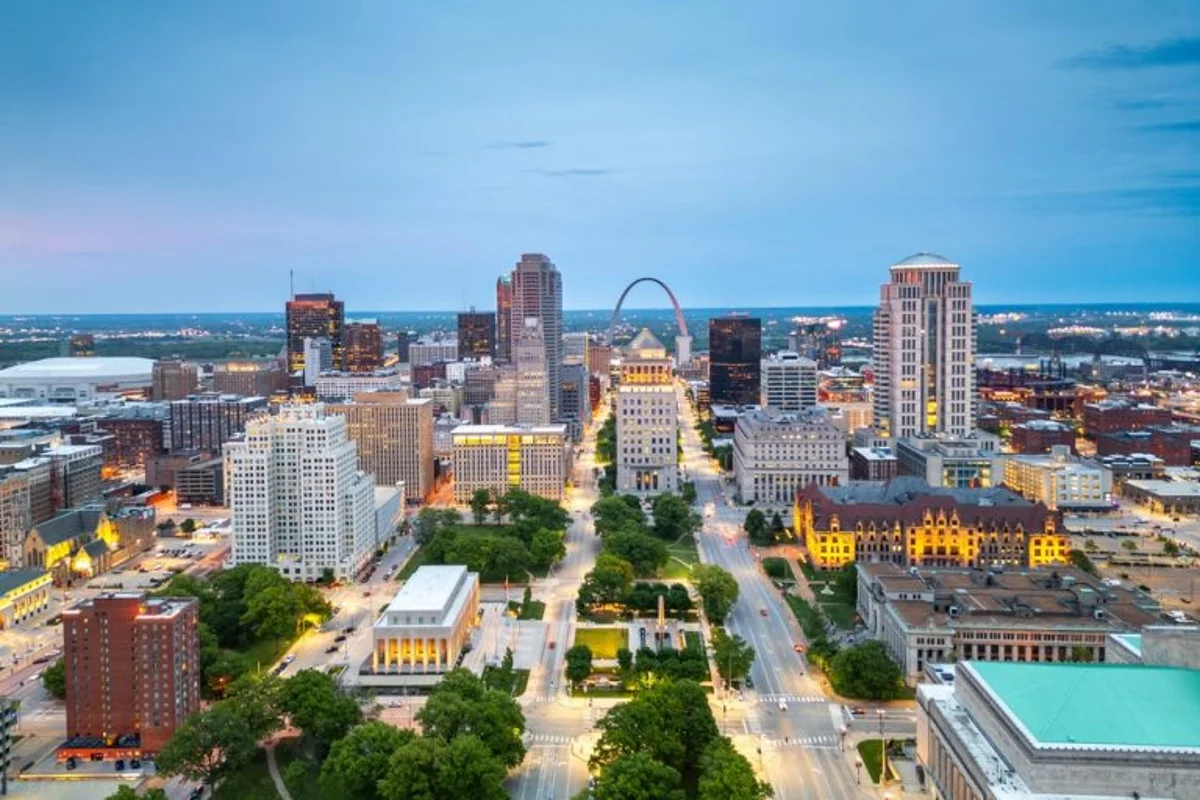By Sarah Edwards
Copyright benzinga

The St. Louis real estate investing market is attracting seasoned investors and newcomers as affordability and appreciation create a sweet spot in a growing midwestern metropolitan area.
New jobs, global investment, immigrant growth, and tourism are all fueling an economy that is among the hottest in the U.S.
This article explores why St. Louis is a top destination for investors. It describes the local market, emerging neighborhoods, and the risks and challenges of investing in St. Louis real estate.
Why St. Louis Remains a Top Investment Destination
The St. Louis real estate investing market boasts a cost of living and median home prices below national averages while notching the highest rate of per capita personal income growth over the last five years. Incomes grew by 6.7% in 2023 to $75,577, according to the most recent available data.
Sitting at the intersection of three major rivers, five interstate highways, five airports and six of the largest freight rail carriers in North America, the Gateway to the West is home to the headquarters of 15 Fortune 1000 companies, including seven in the Fortune 500.
The greater St. Louis area is the third most diverse economy in the U.S., with manufacturing, healthcare, biotechnology, information technology, finance, insurance, education and research among its industries.
With more than 2.8 million residents, the St. Louis metro area continues to grow, attracting domestic and international real estate investors. About 55% of residents in the metropolitan area rent.
While economically diverse, the area is also culturally diverse. St. Louis proper has seen a decrease in residents, but more than 30,000 foreign-born newcomers countered the outmigration in 2024.
Foreign investment impacts the market as much as immigration. From 2012 to 2022, Missouri’s employment from foreign direct investment rose 50%, with the state employing 134,300 workers, according to the most recent available data.
Current St. Louis Market Overview in 2025
When it comes to St. Louis housing market trends, the region is competitive. Sellers get multiple bids, and homes don’t stay on the market long.
Median home price: $247,250 as of July 2025, up 9.4% year over yearAverage home value: $185,399 as of July 2025, up 0.5% year over yearMedian listing price: $217,333 as of July 2025Median days to pending: Nine as of July 2025
Rental Market Trends
The St. Louis rental market is stable, with market rents increasing slightly year over year, driven by growing demand in certain neighborhoods. The average rent is 40.48% lower than the national average.
Average rent: $1,405 as of July 2025Median rent: $1,250 as of July 2025Year-over-year rent decrease: Flat
Commercial Real Estate Outlook
Commercial real estate offers investors several benefits: long-term leases, steady cash flow, diversification, potential appreciation, tax benefits and income potential. For St. Louis property investment, 2025 is shaping up to be a year of continued growth and stability, providing opportunities.
Overall, vacancy in office, industrial and retail spaces generally remained stable through the first half of the year. The vacancy rate for office space stayed put at the end of the first and second quarters, and the vacancy rate for industrial space closed out the second quarter at 2.8%. Vacancies in the retail sector dropped to 4.7%.
Additional units drove the vacancy rate for multifamily up to 10.1% by the end of the first quarter of 2025, but rental prices remained steady. However, the number of units in the pipeline has plummeted by 36.5% year over year, and rents are projected to grow 3.6% this year.
Across the office, industrial and retail sectors, leasing has been strong through the first half of the year and is expected to remain so. St. Louis is expected to see commercial development continue in the core of the city and the Metro East and North County areas.
Emerging Neighborhoods to Watch
A surging economy and a resurgent population accompanying job growth make St. Louis a metro area to consider for real estate investing. Here are a few of the neighborhoods to watch:
Tower Grove South
The mix of urban and suburban living here drives high demand from renters. Home prices run about $225,000, and monthly rents average about $1,050.
Downtown West
Downtown West, a hub of entertainment, shopping and dining, is one of the most profitable locations in St. Louis. Home prices average around $131,000, with rents averaging $1,310 per month.
Forest Park Southeast
Also known as The Grove, Forest Park Southeast is a bastion of vibrancy transformed from a historically working-class neighborhood. Home prices average around $424,000, with the monthly average rent for the area at $1,667.
History and process coexist in Shaw, making the area a big draw for renters. The median home price is $280,000, and rents average $1,090 per month.
Keep in mind that prices and rents in these neighborhoods may be rising, but they still fall well below the national averages in most cases.
Key Risks and Challenges to Consider
St. Louis and the surrounding area are not without risks and challenges.
Harsh winter weather can lead to additional maintenance and tenant complaints, while spring and summer can bring severe storms and potential flooding, pushing up insurance costs.
Missouri has no state income tax. However, following property tax rates that bounce around can be a challenge. You can also feel the tug on your pockets if you invest in urban renewal areas. The cost of renovations and inspections can eat into potential profits.
Sustained growth is another area to watch in St. Louis. Immigration is driving population growth, so the region must work on policies to drive sustainable growth from around the U.S. as well as other countries.
Consider the St. Louis Real Estate Investing Market
The St. Louis area beckons seasoned and beginning real estate investors. The city on the banks of the Mississippi River features homes below the national average, a steady economy, rising salaries, a growing population and more renters than homeowners.
Real estate investing in St. Louis is best suited for investors looking for affordability, cash flow and long-term appreciation over short-term returns, although the city provides ample opportunities for those with the time and skills to fix and flip.
Frequently Asked Questions



